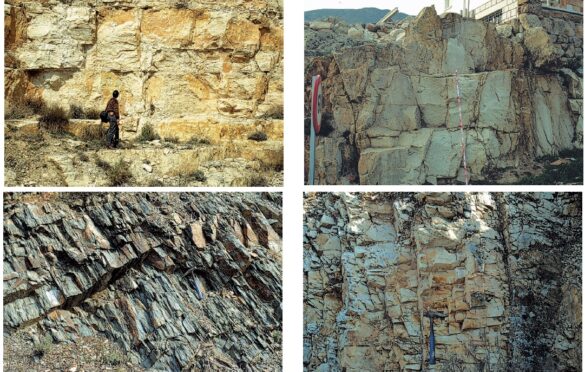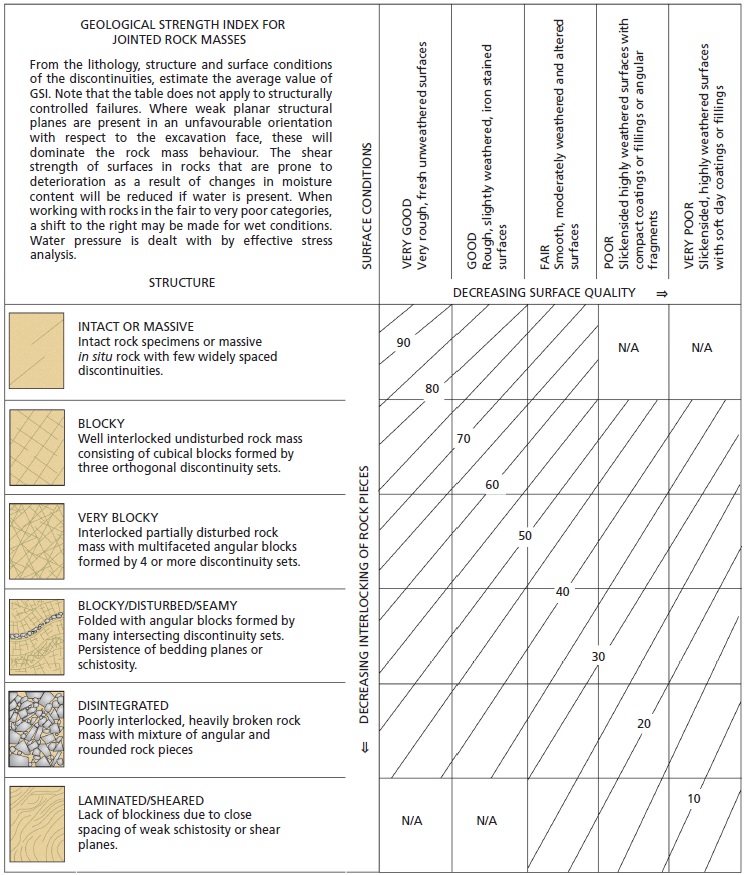Geological Strength Index (GSI)

In the world of geotechnical engineering and rock mechanics, a profound comprehension of rock mass properties is paramount. Among the critical tools in this field stands the Geological Strength Index (GSI). Developed to assess the quality of rock masses, GSI has become indispensable for engineering endeavors, offering vital insights into the stability of rock formations and aiding decision-making processes. In this comprehensive guide, we will delve into the Geological Strength Index, exploring its origin, interpretation, and its crucial correlation with the Rock Mass Rating (RMR) system.
What is the Geological Strength Index (GSI)?
The Geological Strength Index (GSI) is a numerical scale that serves as a cornerstone in characterizing the surface conditions of rock masses. It quantifies the geological strength properties of the rock, simplifying the assessment of rock mass behavior and stability for engineers and geologists alike. Dr. Evert Hoek introduced GSI in 1994, revolutionizing rock mass classification by offering a more rational and data-driven approach.
GSI at a Glance
- Introduction Year: 1994
- Founder: Dr. Evert Hoek, a renowned geotechnical engineer and rock mechanics expert.
Who Benefits Most from GSI?
The Geological Strength Index finds its most avid users among geotechnical engineers, engineering geologists, and professionals engaged in rock engineering and underground construction projects. Its popularity stems from its simplicity and its ability to provide valuable data on rock mass quality and behavior. Industries such as mining, civil engineering, tunneling, and slope stability analysis rely heavily on GSI to make informed decisions.
Deciphering the GSI
Interpreting the Geological Strength Index involves a systematic process based on careful observations of the rock mass surface. A detailed field assessment is typically conducted, examining various geological features such as surface roughness, block size, weathering, and the presence of joints, fractures, and discontinuities.

Once the relevant data is gathered, it is compared to the GSI chart, which assigns numerical values corresponding to observed surface conditions. GSI values span from 0 (indicating extremely weak rock masses) to 100 (indicating extremely strong rock masses). As the GSI value increases, so does the rock mass quality and strength.
Correlation of Geological Strength Index (GSI) with RMR (Rock Mass Rating)
The GSI can be derived from the Rock Mass Rating (RMR) using the following correlation formula:
GSI = RMR(89) – 5
A value of 15 should be assigned to the groundwater conditions of the rock mass, and a value of 0 should be assigned to the adjustment parameter for joint orientation. It’s essential to keep in mind the following considerations when applying the Hoek-Brown criterion and interpreting the strength values:
- The criterion is only valid for rock masses with isotropic behavior.
- GSI is based on qualitative estimates and simple models, which may not always align with actual conditions.
- Results should be cross-referenced with other methods and, whenever possible, validated with field data and back analysis.
For example, if RMR = 30 (which belongs to the IV category of rock mass according to RMR), GSI can be calculated as follows:
GSI = 30 (RMR) – 5
Resulting in GSI = 25.
In Conclusion
The Geological Strength Index (GSI) has risen to prominence as a fundamental parameter in geotechnical engineering. Its simplicity, coupled with its correlation with the Rock Mass Rating (RMR) system, has cemented its status as a versatile and vital tool across various industries. A deep understanding of GSI empowers geotechnical engineers and geologists to make informed decisions, ensuring the safety and efficiency of underground constructions, mining operations, and other rock-related engineering projects. As the field of rock mechanics continues to evolve, GSI remains an indispensable asset for professionals navigating the intricate world of geology and engineering geology.
